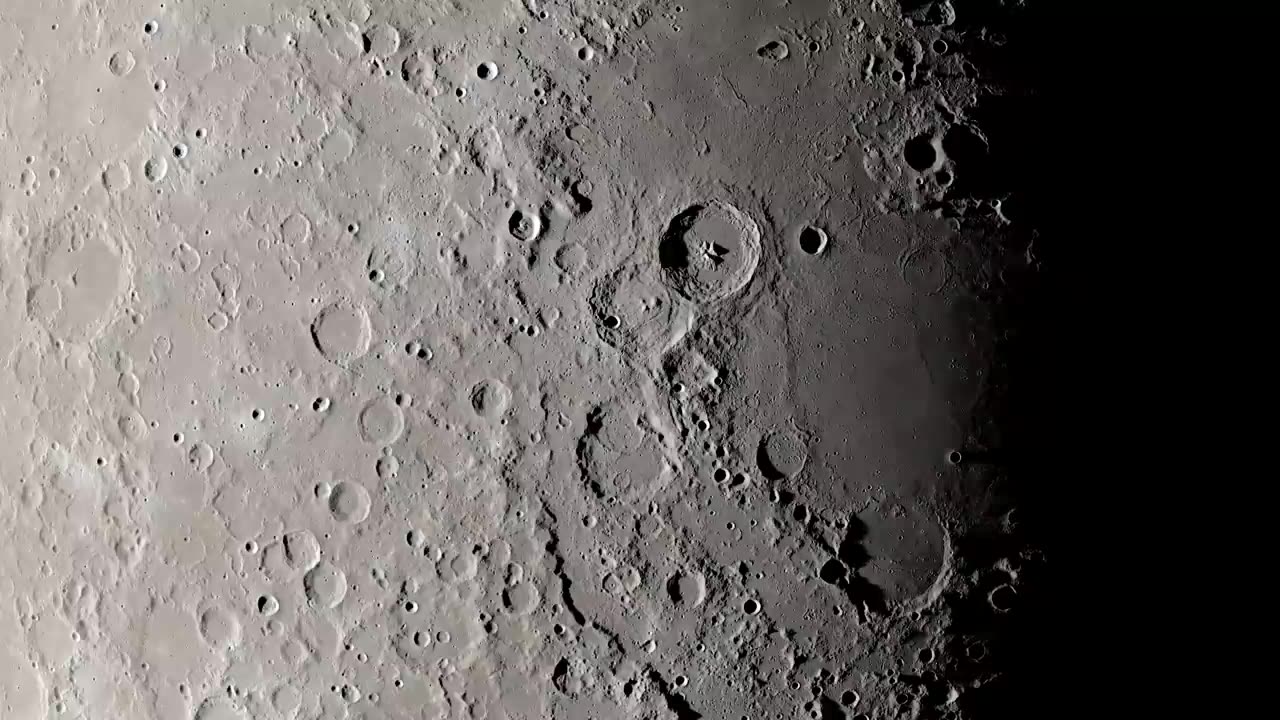Premium Only Content

Clair de Lune 4K Version - Moon Images from NASA's Lunar Reconnaissance Orbiter
This visualization uses a digital 3D model of the Moon built from global elevation maps and image mosaics by NASA's Lunar Reconnaissance Orbiter mission. It was created to accompany a performance of Claude Debussy's Clair de Lune by the National Symphony Orchestra Pops, led by conductor Emil de Cou, at the Kennedy Center for the Performing Arts in Washington, DC, on June 1 and 2, 2018, as part of a celebration of NASA's 60th anniversary. Clair de Lune (moonlight in French) was published in 1905, as the third of four movements in the composer's Suite Bergamasque, and unlike the other parts of this work, Clair is quiet, contemplative, and slightly melancholy, evoking the feeling of a solitary walk through a moonlit garden. The visuals were composed like a nature documentary, with clean cuts and a mostly stationary virtual camera. The viThis visualization uses a digital 3D model of the Moon built from global elevation maps and image mosaics by NASA's Lunar Reconnaissance Orbiter mission. It was created to accompany a performance of Claude Debussy's Clair de Lune by the National Symphony Orchestra Pops, led by conductor Emil de Cou, at the Kennedy Center for the Performing Arts in Washington, DC, on June 1 and 2, 2018, as part of a celebration of NASA's 60th anniversary. Clair de Lune (moonlight in French) was published in 1905, as the third of four movements in the composer's Suite Bergamasque, and unlike the other parts of this work, Clair is quiet, contemplative, and slightly melancholy, evoking the feeling of a solitary walk through a moonlit garden. The visuals were composed like a nature documentary, with clean cuts and a mostly stationary virtual camera. The viewer follows the Sun throughout a lunar day, seeing sunrises and then sunsets over prominent features on the Moon. The sprawling ray system surrounding Copernicus crater, for example, is revealed beneath receding shadows at sunrise and later slips back into darkness as night encroaches. ewer follows the Sun throughout a lunar day, seeing sunrises and then sunsets over prominent features on the Moon. The sprawling ray system surrounding Copernicus crater, for example, is revealed beneath receding shadows at sunrise and later slips back into darkness as night encroaches.
-
 1:30:48
1:30:48
Josh Pate's College Football Show
15 hours ago $8.94 earnedCFP Reaction Special | Early Quarterfinal Thoughts | Transfer Portal Intel | Fixing The Playoff
79.3K -
 23:55
23:55
CartierFamily
3 days agoElon & Vivek TRIGGER Congress as DOGE SHUTS DOWN Government
127K152 -
 5:43:44
5:43:44
Scammer Payback
2 days agoCalling Scammers Live
215K29 -
 18:38
18:38
VSiNLive
2 days agoProfessional Gambler Steve Fezzik LOVES this UNDERVALUED Point Spread!
155K20 -
 LIVE
LIVE
Right Side Broadcasting Network
10 days agoLIVE REPLAY: President Donald J. Trump Keynotes TPUSA’s AmFest 2024 Conference - 12/22/24
2,586 watching -
 4:31
4:31
CoachTY
1 day ago $28.72 earnedCOINBASE AND DESCI !!!!
193K13 -
 10:02
10:02
MichaelBisping
1 day agoBISPING: "Was FURY ROBBED?!" | Oleksandr Usyk vs Tyson Fury 2 INSTANT REACTION
113K16 -
 8:08
8:08
Guns & Gadgets 2nd Amendment News
2 days ago16 States Join Forces To Sue Firearm Manufacturers Out of Business - 1st Target = GLOCK
132K93 -
 10:17
10:17
Dermatologist Dr. Dustin Portela
2 days ago $19.59 earnedOlay Cleansing Melts: Dermatologist's Honest Review
166K18 -
 1:02:20
1:02:20
Trumpet Daily
2 days ago $52.45 earnedObama’s Fake World Comes Crashing Down - Trumpet Daily | Dec. 20, 2024
121K86